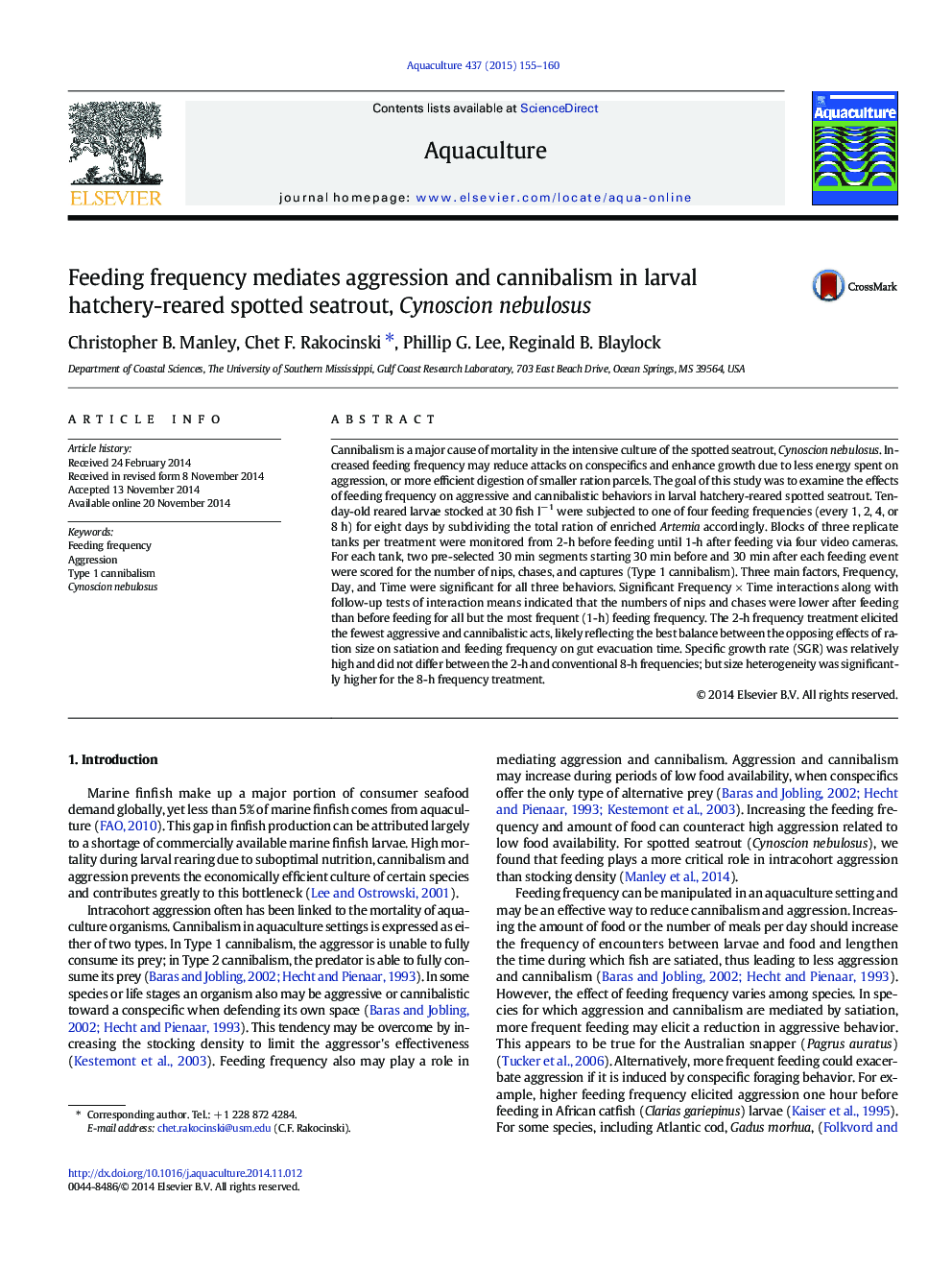| کد مقاله | کد نشریه | سال انتشار | مقاله انگلیسی | نسخه تمام متن |
|---|---|---|---|---|
| 8494748 | 1552850 | 2015 | 6 صفحه PDF | دانلود رایگان |
عنوان انگلیسی مقاله ISI
Feeding frequency mediates aggression and cannibalism in larval hatchery-reared spotted seatrout, Cynoscion nebulosus
دانلود مقاله + سفارش ترجمه
دانلود مقاله ISI انگلیسی
رایگان برای ایرانیان
موضوعات مرتبط
علوم زیستی و بیوفناوری
علوم کشاورزی و بیولوژیک
علوم آبزیان
پیش نمایش صفحه اول مقاله

چکیده انگلیسی
Cannibalism is a major cause of mortality in the intensive culture of the spotted seatrout, Cynoscion nebulosus. Increased feeding frequency may reduce attacks on conspecifics and enhance growth due to less energy spent on aggression, or more efficient digestion of smaller ration parcels. The goal of this study was to examine the effects of feeding frequency on aggressive and cannibalistic behaviors in larval hatchery-reared spotted seatrout. Ten-day-old reared larvae stocked at 30 fish lâ 1 were subjected to one of four feeding frequencies (every 1, 2, 4, or 8 h) for eight days by subdividing the total ration of enriched Artemia accordingly. Blocks of three replicate tanks per treatment were monitored from 2-h before feeding until 1-h after feeding via four video cameras. For each tank, two pre-selected 30 min segments starting 30 min before and 30 min after each feeding event were scored for the number of nips, chases, and captures (Type 1 cannibalism). Three main factors, Frequency, Day, and Time were significant for all three behaviors. Significant Frequency Ã Time interactions along with follow-up tests of interaction means indicated that the numbers of nips and chases were lower after feeding than before feeding for all but the most frequent (1-h) feeding frequency. The 2-h frequency treatment elicited the fewest aggressive and cannibalistic acts, likely reflecting the best balance between the opposing effects of ration size on satiation and feeding frequency on gut evacuation time. Specific growth rate (SGR) was relatively high and did not differ between the 2-h and conventional 8-h frequencies; but size heterogeneity was significantly higher for the 8-h frequency treatment.
ناشر
Database: Elsevier - ScienceDirect (ساینس دایرکت)
Journal: Aquaculture - Volume 437, 1 February 2015, Pages 155-160
Journal: Aquaculture - Volume 437, 1 February 2015, Pages 155-160
نویسندگان
Christopher B. Manley, Chet F. Rakocinski, Phillip G. Lee, Reginald B. Blaylock,